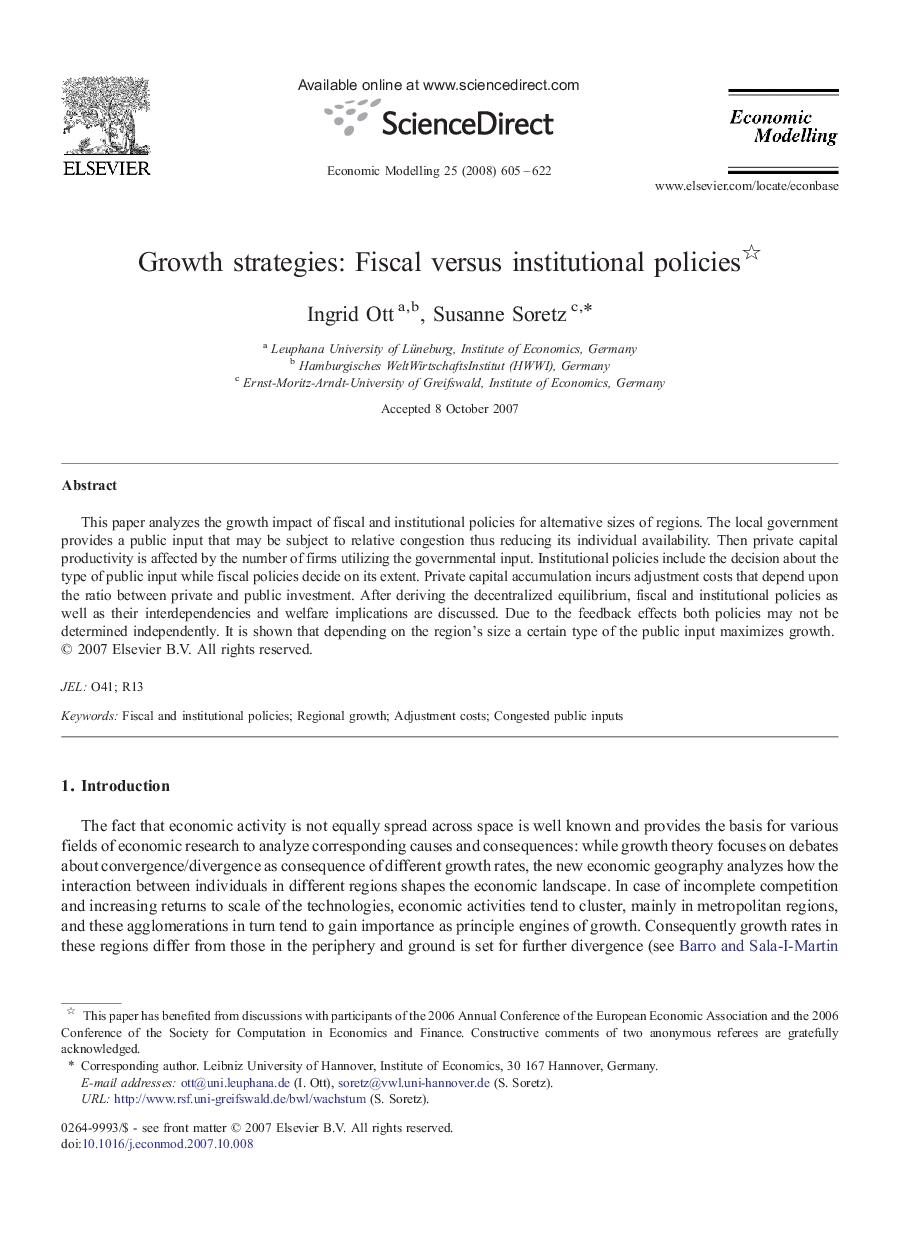| Article ID | Journal | Published Year | Pages | File Type |
|---|---|---|---|---|
| 5055921 | Economic Modelling | 2008 | 18 Pages |
Abstract
This paper analyzes the growth impact of fiscal and institutional policies for alternative sizes of regions. The local government provides a public input that may be subject to relative congestion thus reducing its individual availability. Then private capital productivity is affected by the number of firms utilizing the governmental input. Institutional policies include the decision about the type of public input while fiscal policies decide on its extent. Private capital accumulation incurs adjustment costs that depend upon the ratio between private and public investment. After deriving the decentralized equilibrium, fiscal and institutional policies as well as their interdependencies and welfare implications are discussed. Due to the feedback effects both policies may not be determined independently. It is shown that depending on the region's size a certain type of the public input maximizes growth.
Related Topics
Social Sciences and Humanities
Economics, Econometrics and Finance
Economics and Econometrics
Authors
Ingrid Ott, Susanne Soretz,
